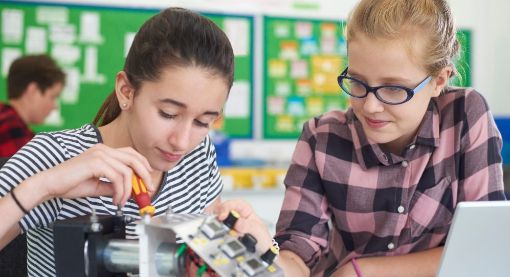What are the characteristics of good science instruction? Can students develop conceptual understanding through inquiry? And what creates student engagement and motivation?
All of this matters when it comes to learning science. That's why researchers in the LISSI-project are interested to learn more about how science is taught throughout the country.
About the project
The objective of this classroom study is to create a wider knowledge base for understanding the relationship between different types of instruction and the ways students learn. Over the course of three years, the researchers collected data from 20 classes on 4th-grade and 8th-grade level. The data consists of video recordings of science instruction, which are linked with results from school tests and students surveys, and interviews with teachers.
Focusing on inquiry-based science
Inquiry-based methods play an important role in science instruction and are emphasized in the subject curriculum. Teachers' experience and research suggest that inquiry is more likely to engage and motivate students. However, we still need to know more about the quality of instructional practices that use inquiry-based methods.
Inquiry-based science is also part of the large international surveys TIMSS and PISA, and both surveys provide important findings regarding the link between student achievement, instruction and student engagement. However, TIMSS and PISA only provide insight into the frequency, i.e. how often students and teachers work with inquiry-based science methods. We lack an understanding of the quality of the inquiry activities to be able to say give context to the findings in TIMSS and PISA.
Characterise classroom practices
The first goal is to study the characteristics of Norwegian classroom practice, and analyze how these may be related to student learning (results). We give a descriptive analysis of the participating science classes with the use of video observation of how teachers organize their teaching, student learning activities and the relationship that occurs between these two. Results will be connected with data for student learning competencies as measured with a pre- and post-test based on PISA and TIMSS questions.
Provide examples of successful instruction
The second goal is to provide examples of good teaching practice in science and to evaluate how teachers provide opportunities for students to work in-depth in science. Case studies will consist of invited classes with a special focus on science (e.g. inquiry-based science teaching, basic skills, technology-based resources, out of school learning environment), and classes with interesting results from the first round of video observations.
Possibilities for going deeper
The third goal is to evaluate the possibilities of teachers to go into depth in science. To accomplish this, we map the discipline (science) and pedagogical competencies necessary for going into depth in science. We interview teachers to provide this information, in addition to studying a few cases in more detail where longer inquiry-based sequences are provided in the video analysis, together with varied types of text and discussion strategies in classroom practice.
Cooperation
The research is conducted by researchers from the Department of Teacher Education and School Research in cooperation with researchers from the University of Tromsø. The results present important contributions to teacher education programs in both universities, in cooperation with ProTed -Centre for Professional Learning in Teacher Education.
Financing
The project is funded by The Norwegian Directorate for Education and Training, and started in 2018.
